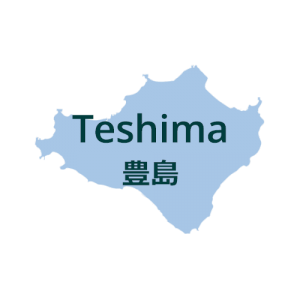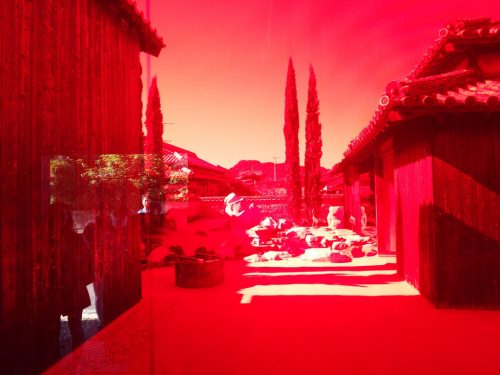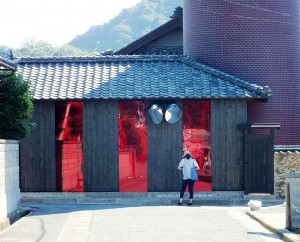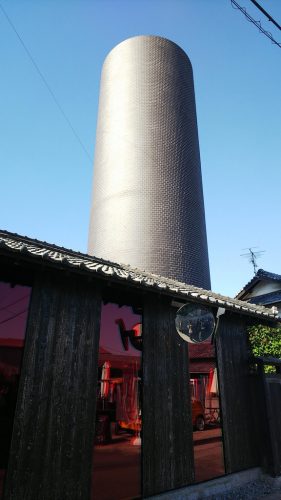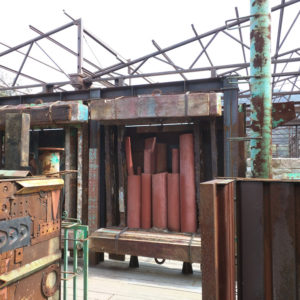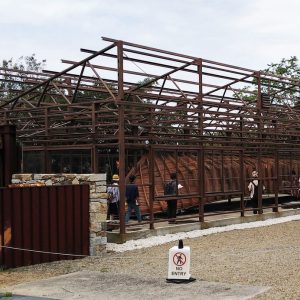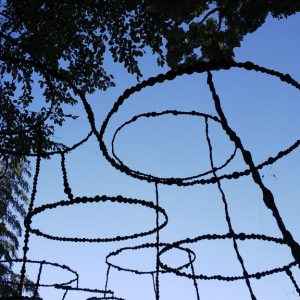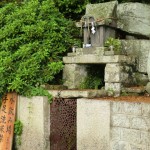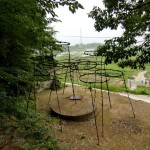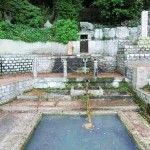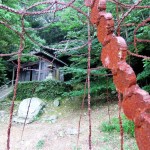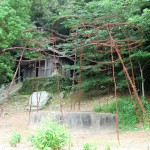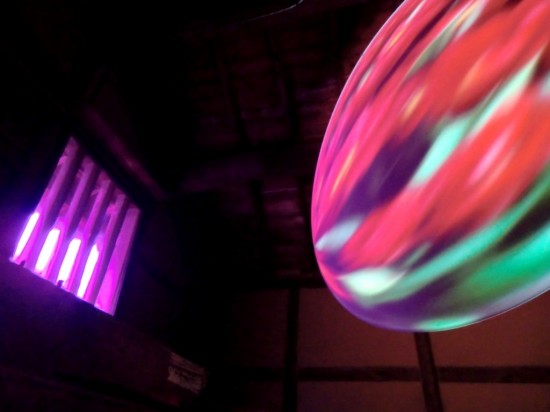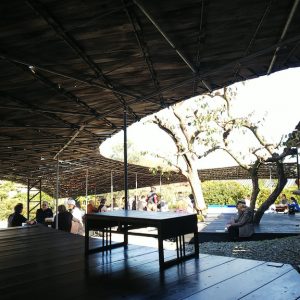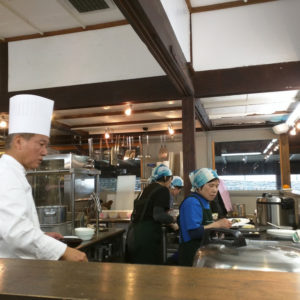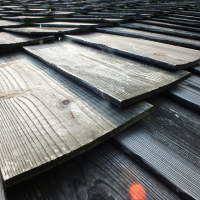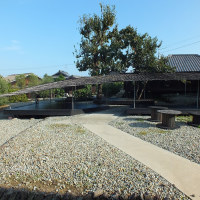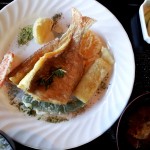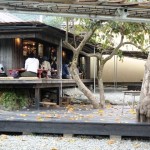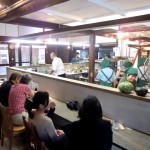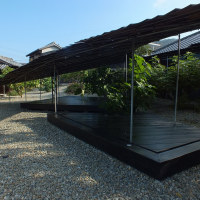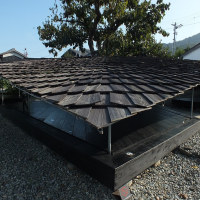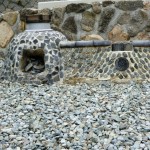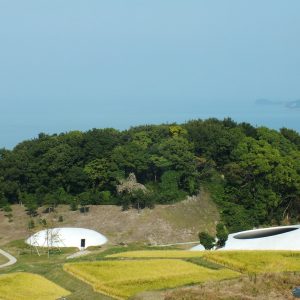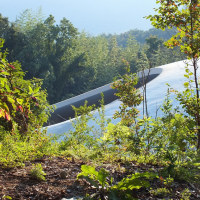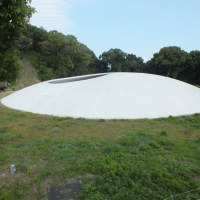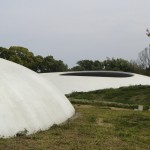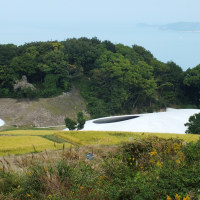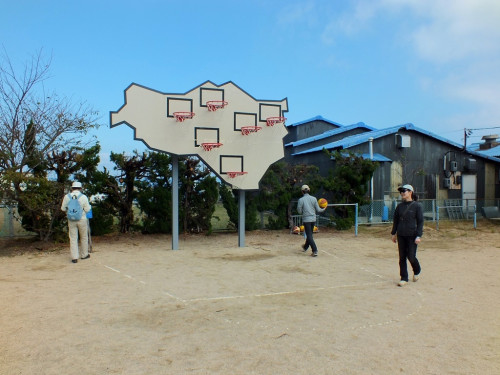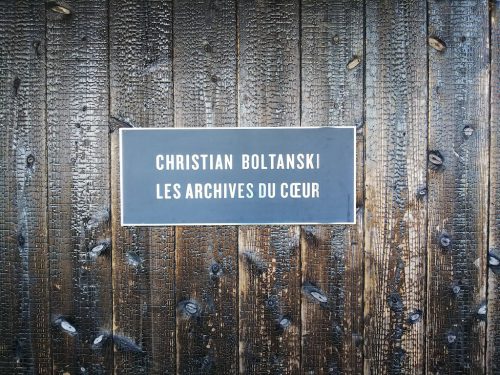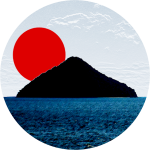In recent years, Teshima has become Benesse Art Site‘s new “playground”. It is true that Naoshima and Inujima have started to run out of space for new art. It’s nice to see Teshima becoming an attractive place again after so many years of hardships. However, I’m a little worried that its newfound fame, especially abroad, turns it into a place that becomes a bit too touristic, which could spoil its beauty or its wonderfully quiet and peaceful atmosphere. Let’s hope a balance can be found between attracting more people and keeping its identity as one of the most pleasant islands of Setouchi.
- Land Area: 14,5 sq km
- Circumference: 18 km
- Highest Point: 340 m (Mount Dan)
- Population: 768 in January 2022
- roughly 500 in Ieura, 250 in Karato and 50 in Koh
Access
Teshima’s main shortcoming is that it’s a bit difficult to reach from Takamatsu. There is a regular direct boat between Takamatsu and Ieura Port, but it is a little bit pricey and there aren’t that many boats a day. So it sometimes can be more convenient to make a detour through Shodoshima or Uno Port. It takes longer, but there are many more options this way, both in terms of scheduling and destination as it allows to reach Teshima in Karato Port too.
There is a direct boat between Karato and Takamatsu, but outside of the Setouchi Triennale, it runs very rarely.
If you’re coming from Honshu, you will most likely arrive by ferry from Uno Port. This ferry with a final destination to Shodoshima allows access to both Ieura and Karato ports on Teshima.
There are also a few boats from and to Naoshima and Inujima, but make sure to double-check their schedule.
Getting around Teshima
The island has a certain size. While it’s possible to walk around the island, it will take a long time to do so. It takes around 30 minutes to walk between two villages, depending on your own pace and depending on whether you’re going uphill or downhill. However, there is a bus going around the island. Note that it doesn’t run very often outside of the festival and can be quite crowded during the Setouchi Triennale.
It is possible to rent electric bicycles, and when the weather is nice, they’re the best way to get around the island. It gives you mobility and freedom in a way other means of transportation won’t, allowing you to enjoy the beauty of the island and the area at your own pace. Also, being able to effortless climb a hill (some are pretty steep) is priceless. You will probably need to make a reservation or arrive among the first on the island. They go fast.
If you’re coming from Honshu or Shodoshima, you can bring your own car. You can also rent cars on the island. However, I don’t really advise it, unless riding a bicycle is difficult for you or the weather is bad. Cars are not a great way to go around the island because you’ll miss the most beautiful landscapes and parking can be scarce in some areas.
Baggage Lockers
There are baggage lockers in Ieura port (maybe in Karato port too, although I can’t confirm at the moment). They should be available from 8.30 am to 5 pm and should cost 300 yen (I could be wrong).
More
Check out Hinomaple’s Teshima Guide for more general information about the island.
Artworks
In general, outdoor artworks are free and accessible in permanence.
Unless stated otherwise, indoor artworks are open every day except Tuesdays during the Setouchi Triennale. Make sure to double-check opening and closing days and hours on official documentation as some art sites may have special schedules.
Entrance to indoor artworks usually costs 300 or 520 yen without a Triennale Passport. Entrance is free for children and teenagers younger than 16. Consult the details of each artwork below or official documentation for special pricing.
Note that some artworks have a numbering ending with B. Those are artworks managed by Benesse Art Site Naoshima (please read this blog post if you need clarification about these names). They usually are the artworks that may have special scheduling and special pricing.
Artworks are located at different sites and communities all over the island as follows:
Ieura
te02-B
Teshima Yokoo House
Tadanori Yokoo (Concept & Art) – Yuko Nagayama (Architect) (2013)
- Location: Ieura (more or less in the center of the village – you can’t miss the tower)
- Entrance: 520 yen
- Managed by Benesse Art Site Naoshima.
- Pictures are prohibited.
- Teshima Yokoo House online: Official Site
- Yuko Nagayama online: Site, Twitter
- Tadanori Yokoo online: Site, Twitter, Instagram
- Hinomaple’s article
- Managed by the Fukutake Foundation
Review: I’m not going to lie, I wasn’t a huge fan of Yokoo’s paintings at first. I’m still not exactly a fan, but they’ve grown on me with time. Being able to understand them helps to appreciate them (make sure you read the documentation, there is a possibility for guided tours too – see official site). The building itself is simply stunning. I especially love the fish pond running under the main room of the house. Inside the tower, a very unique experience awaits you, although it’s tough on my fear of heights. Finally, make sure you go to the restroom.
te03-B
Needle Factory
Shinro Ohtake (2016, 2022)
- Location: Ieura, near the village’s exit to Koh.
- Entrance: 520 yen
- Managed by Benesse Art Site Naoshima.
- Pictures are prohibited inside.
- Shinro Ohtake online: Site (in Japanese)
- Hinomaple’s article
- Managed by the Fukutake Foundation
Review: Ohtake’s artworks are often quite organic, they evolve over time (sometimes even include living things). I hope that this is the case here. Otherwise, this installation is just an upside-down boat mold left in a warehouse that has been stripped of its walls and roof (only the metal “skeleton” remains). Some sort of ready-made that could be way more interesting. It feels unfinished, or rather a very long-term project that is meant to evolve over time. Let’s hope this is the case.
Please note that the artwork has indeed changed in 2022, but that I haven’t had the chance to see its new incarnation yet.
Karato-oka
te08
Particles in the Air
Noe Aoki (2010)
- Location: Right at the Karato-oka’s entrance coming from Ieura. Right next to the “shimizu” (freshwater spring) that is kind of part of the art too.
- Outdoor art – free access
- Noe Aoki online: Site
- On the blog
- Hinomaple’s article
Review: This sculpture doesn’t look like anything special, and many visitors tend to overlook it. However, I advise you to give it a few minutes of your time. I think it really fits in its environment and helps to make the whole spot a bit mysterious, almost magical. I can’t help but imagine that it is some sort of playground for fireflies or fairies.
Also, make sure you stop at the fountain right next to it. It’s the “Karato-shimizu” which is of great importance in the history of Teshima. The name of the island literally translates to “island of abundance” and the reason for it is this very freshwater spring that is a pretty rare thing on the Seto Inland Sea islands. It is thanks to this source of water that agriculture could develop on Teshima and that it’s one of the few islands where rice can grow (and look where the rice fields are located, right downstream from the shimizu, it is of course not a coincidence).
Finally, when taking pictures, make sure that you walk around the art, the best angle to shoot it may not be the first you see.
te09
Your First Colour (Solution In My Head – Solution In My Stomach)
Pipilotti Rist (2011)
- Location: Karato-oka (right next to Shima Kitchen)
- Entrance: 300 yen
- Pipilotti Rist online: official site, Instagram
- Pictures are prohibited inside (from 2019, pictures below are older)
- On the site: main article, more…
Review: I can’t say I care much for it. Actually, the first few times I saw it, I couldn’t help but find this installation quite pompous and uninteresting as I tried to “analyze” it. However, if you don’t try to do that, if you just let the colors and the atmosphere surround you, the place is more pleasant. Still, if you don’t have time to see every artwork on Teshima, it is probably one of the first you can cut from your list.
te10
Shima Kitchen
Ryo Abe (Architect) (2010)
- Location: Karato-oka
- Free entrance. Of course, foods and drinks are not free.
- Only customers can enter the restaurant (last order at 2 pm). The outside terrace is freely accessible.
- Building designed in collaboration with Kanada Structural Design Lab, Department of Architecture, Faculty of Fine Arts, Tokyo University of the Arts.
- Recipes are designed in partnership between the island’s women and the chefs from Marunouchi Hotel in Tokyo.
- Restaurant managed by NPO Setouchi Koebi Network.
- Shima Kitchen online: Official Site (mostly in Japanese with some English), Facebook (in Japanese)
- Ryo Abe online: Official Site (in English), Facebook (in English and in Japanese), Instagram
- Hinomaple’s article
- On the site
Review: One of my favorite places in the area for all sorts of reasons. It is a place that you must experience, for its food and for its architecture. One small negative note, I have the feeling that nowadays portions are smaller than they used to be. I assume that the restaurant has become too popular, whereas the quantity of food that can be produced has a limit. The thing is that pretty much all of the food you’ll eat in Shima Kitchen is grown on the island (or caught nearby in the case of fish) and by the islanders. Or maybe, portions haven’t gotten that small at all, it’s me who gets too excited when I go and I simply want more? Who knows?
Also note that the cooking staff is entirely composed of locals, and the people from Karato are some of the nicest people you’ll ever meet.
Finally, a practical piece of advice: if you want to eat at Shima Kitchen, make a reservation, especially during the Setouchi Triennale. You can make them online, by phone, or by fax. Please check the official site’s page in English. If you want to try your luck (it sometimes is possible to go without a reservation) arrive as early as possible, before visiting the other artworks in the village. see if there are spots available. If there are, you will be given a time frame when they’ll call you. As it could be up to one hour or so later, you can enjoy some visits and then return to the restaurant when the time comes. Just be sure to be there when they call your name, or you will simply lose your spot. No special treatment. Same if you have made a reservation, they will only keep your table for a few minutes if you’re late. Don’t be late in Japan.
te12-B
La Forêt des Murmures
(The Forest of Whispers)
Christian Boltanski (2016)
- Location: in a forest, uphill from Karato-oka
- Free entrance
- Managed by Benesse Art Site Naoshima
Review: Honestly, only go if you have plenty of time and insist on seeing every single artwork on the island. Going there will take you about 30 minutes walking (a bit less to return to Karato as you’ll be walking downhill). Once you’ve arrived there, you’ll realize that the installation is rather small inside the forest. It only covers around a few dozen square meters, not exactly a “forest” even if it’s in the middle of one. Now, when all the furin start chiming, it can be quite a pleasant experience, but if you go on a day with no wind at all, it may not even happen. In other words, go there “at your own risk” and only if you have plenty of time and if it’s on a breezy day.
te13-B
Teshima Art Museum
Rei Naito (artist) & Ryue Nishizawa (architect) (2010)
- Location: Just outside Karato-oka when heading to Karato-hama
- Entrance: 1,570 yen (not covered by the Triennale Passport)
- You need to buy your tickets in advance and online during the Setouchi Triennale. (you may be able to get in without a reservation if it’s not a busy day, but try it at your own risk)
- Managed by Benesse Art Site Naoshima
- Pictures are prohibited inside the structure
- Ryue Nishizawa online: Site
- Hinomaple’s article
- On the blog: main article, more…
Review: One of the most stunning buildings I have ever seen. Hard (and pointless) to explain why, and pictures can only give you an idea of what it looks like, not what it feels like to experience it. Let me say that if you only get to see one artwork on Teshima or even during the Setouchi Triennale, make sure it’s the Teshima Art Museum. And if you can avoid a busy day, it will only make the experience more unforgettable. I had the chance to have it all for myself a few years ago (not sure if it’s still possible nowadays, the place has become too famous for that), and it will remain one of my favorite memories of Art Setouchi.
Karato-hama
te14
No One Wins – Multibasket
Llobet & Pons (2013)
- Location: Karato-hama
- Outdoor art, free access.
- Llobet & Pons online: Site, Twitter
- On the blog: main article
Review: It will probably be the most fun thing you will do during your trip to Teshima even (especially?) if you’re not good at basketball. I make a point of shooting a few hoops every time I’m in the area.
te15-B
Les Archives du Cœur
(The Heart Archives)
Christian Boltanski (2010)
- Location: at the end of the beach to the east of Karato-hama
- Entrance: 520 yen
- Recording your heartbeat: 1,570 yen. Your heartbeat will be recorded and added to the database. You will also get a recorded copy on a CD.
- Managed by Fukutake Foundation
- Pictures are prohibited inside the installation
- On the site: main article
Review: On the one hand, I like it. On the other one, I find the whole thing a bit pretentious. Also, Boltanski’s obsession with death annoys me at times, and I tend to find it out of place in the context of Art Setouchi. Let’s not forget that the goal of the whole endeavor is to revitalize the region. I guess the fact that he’s one of the most famous European artists around here attracts visitors, and that does help with revitalization.
Kō
te19
Place for Sea Dreamers
Heather B. Swann & Nonda Katsalidis
outside artwork
description coming soon
If you’ve found the information on this page useful, please follow the link below:
